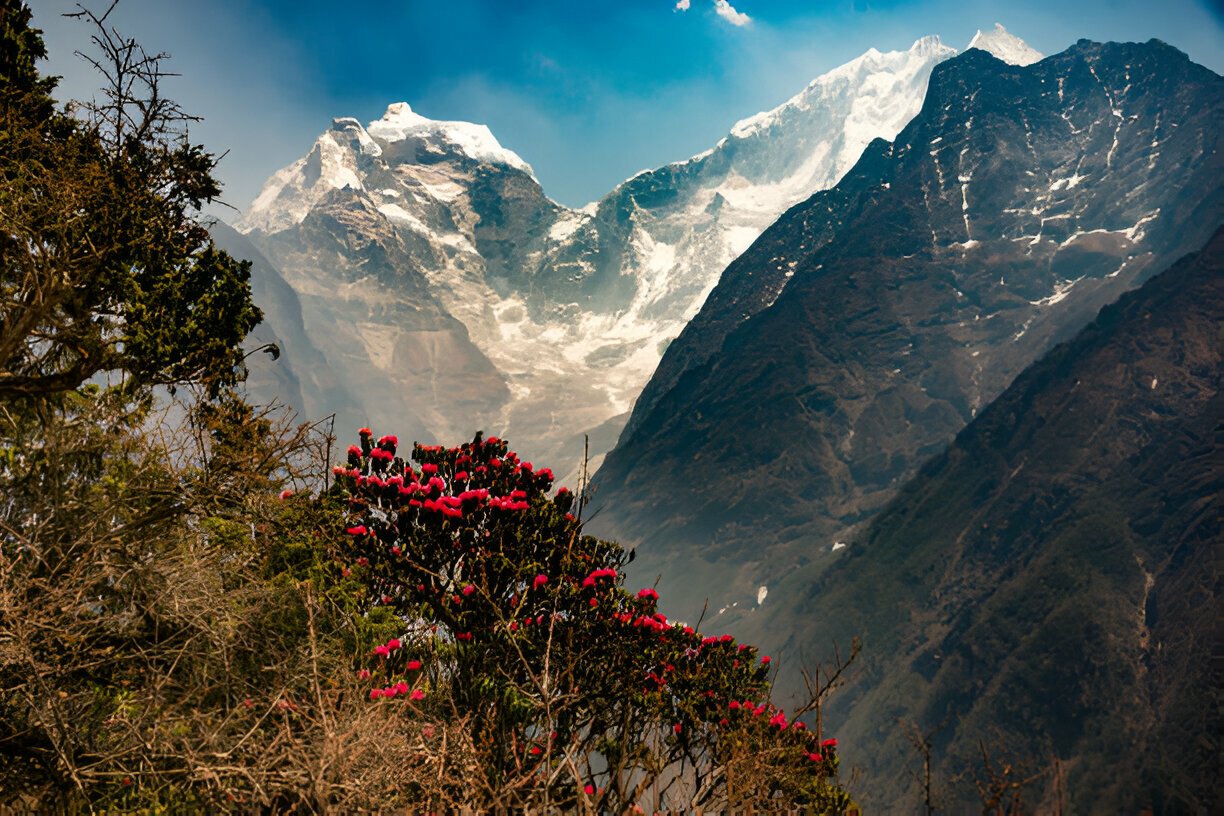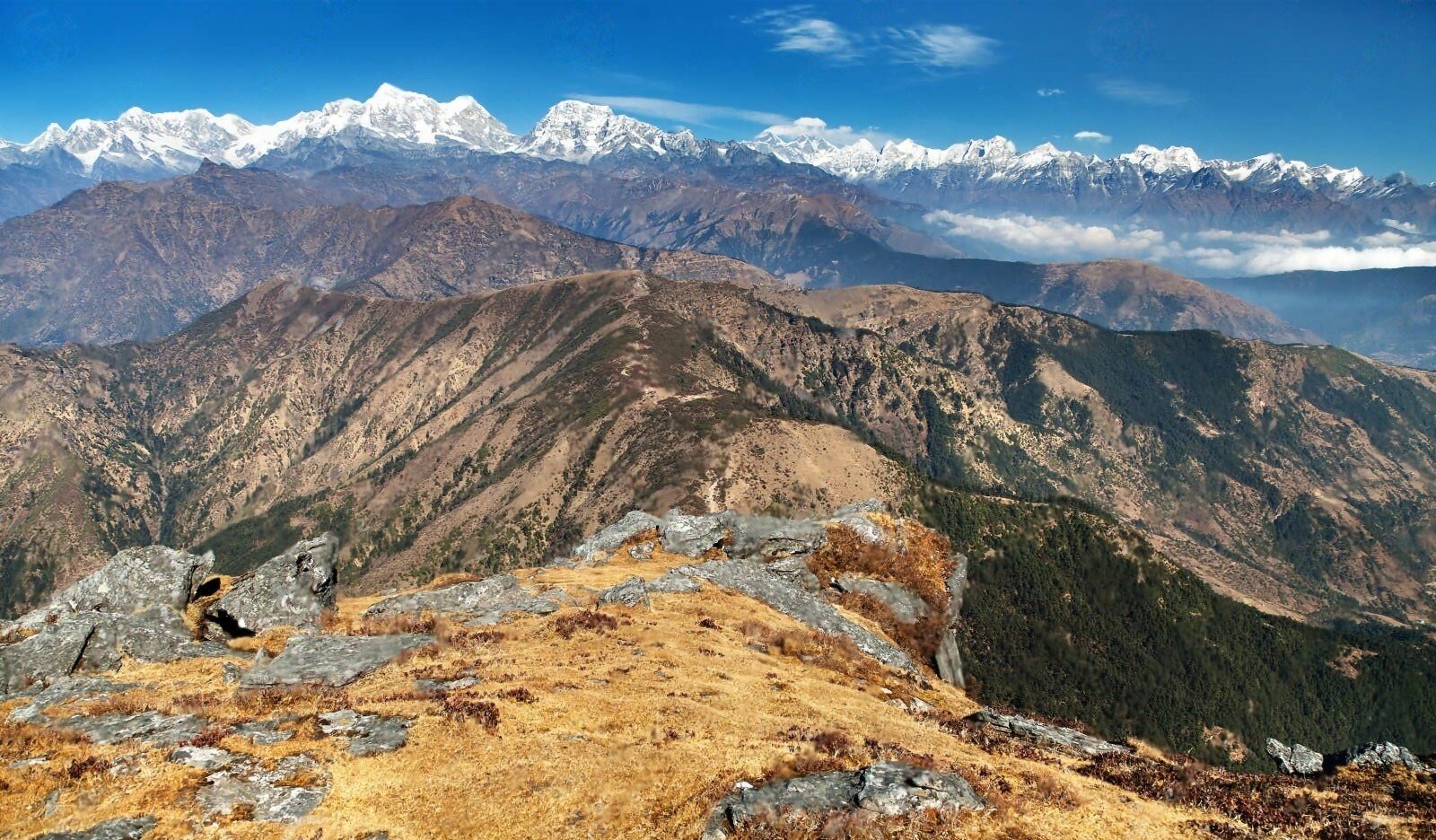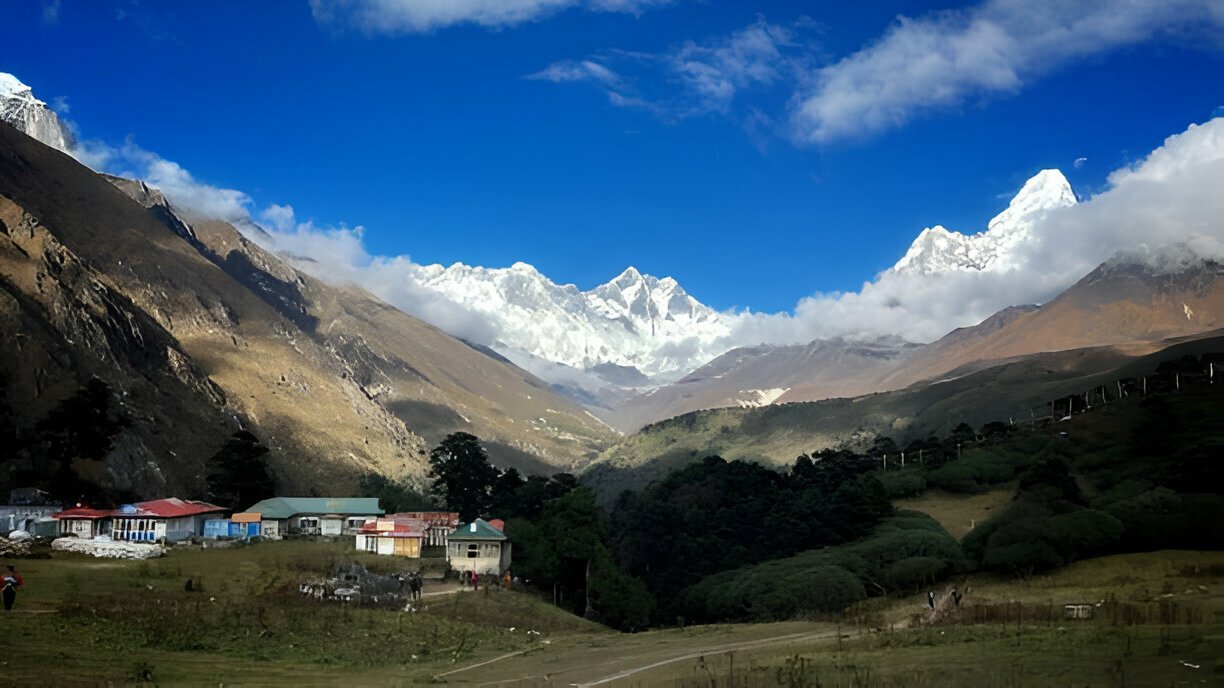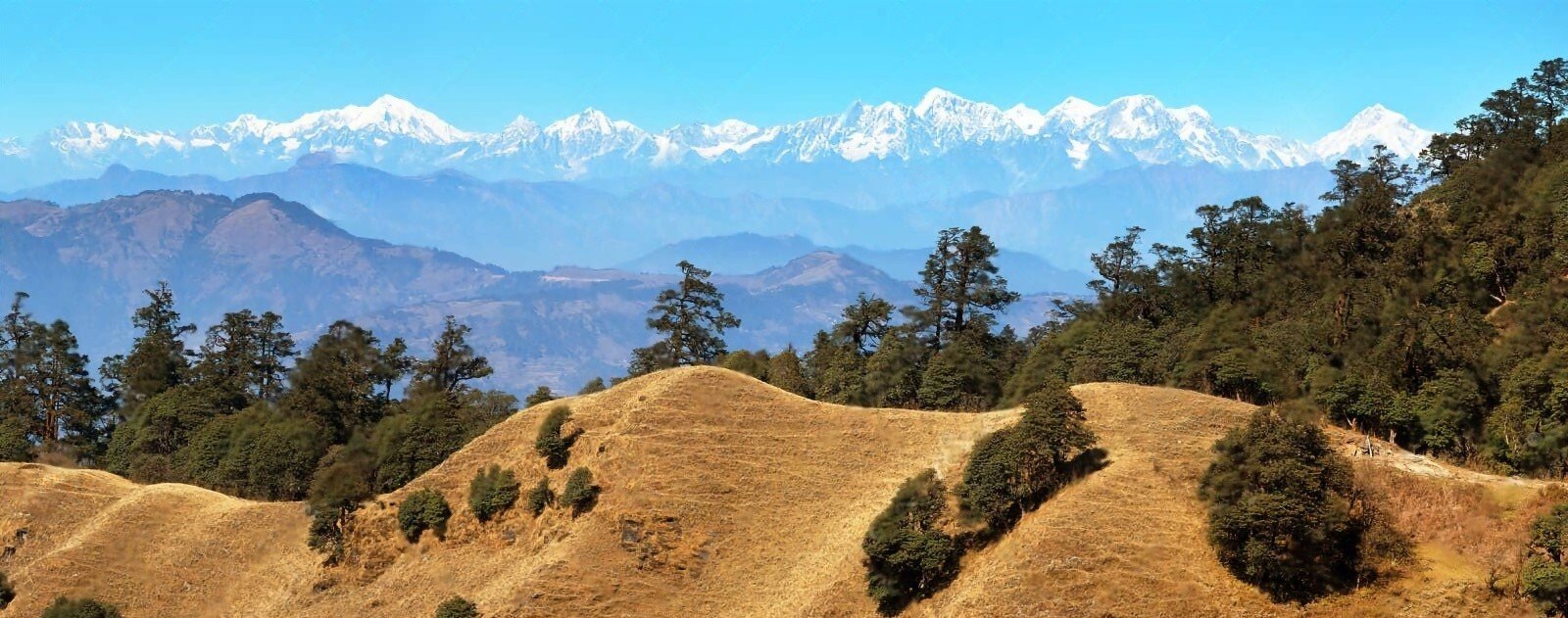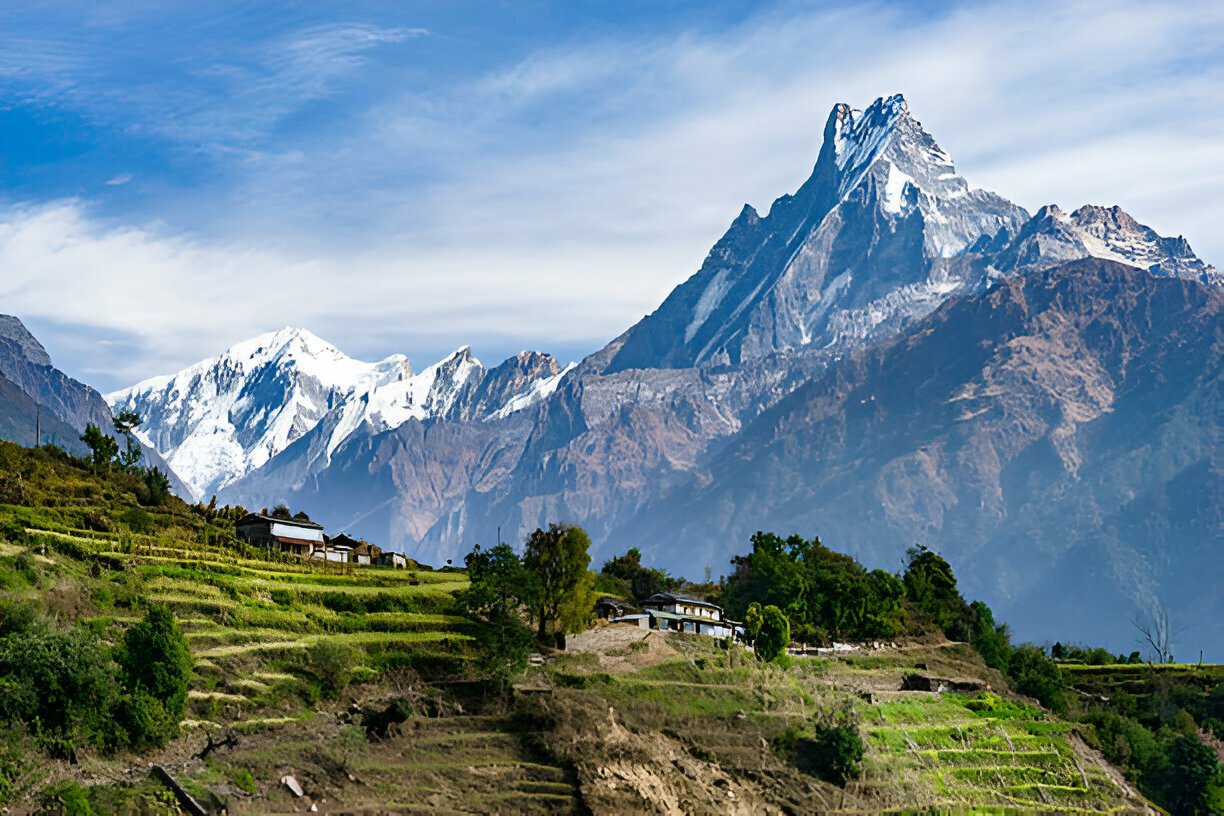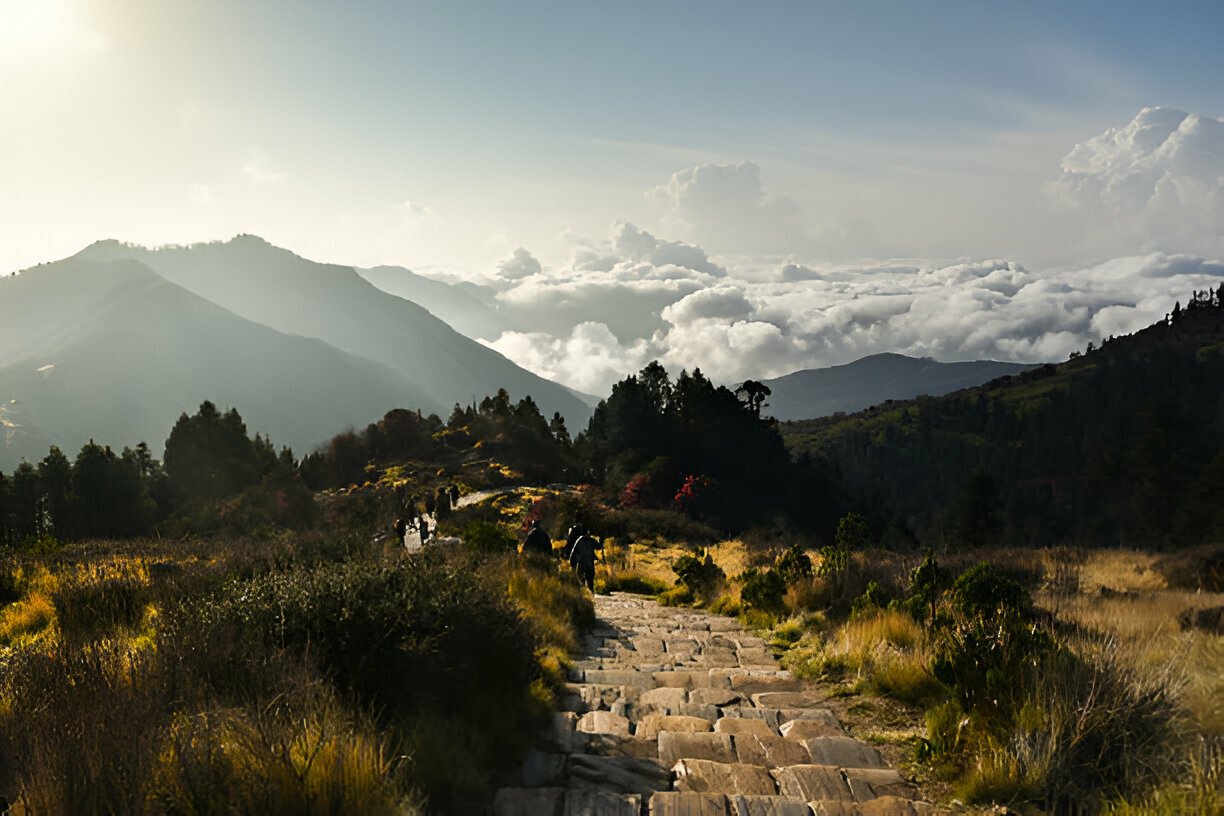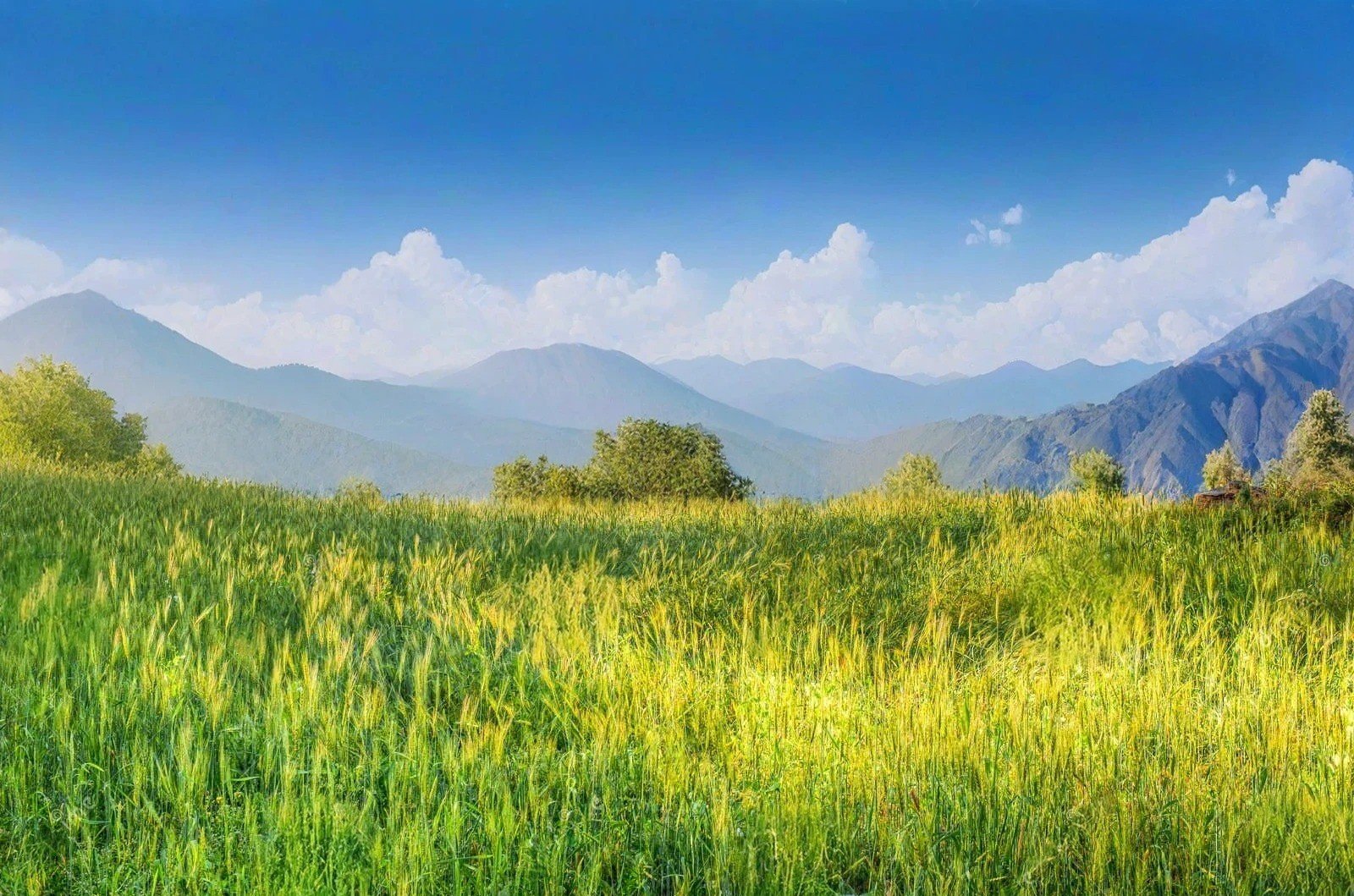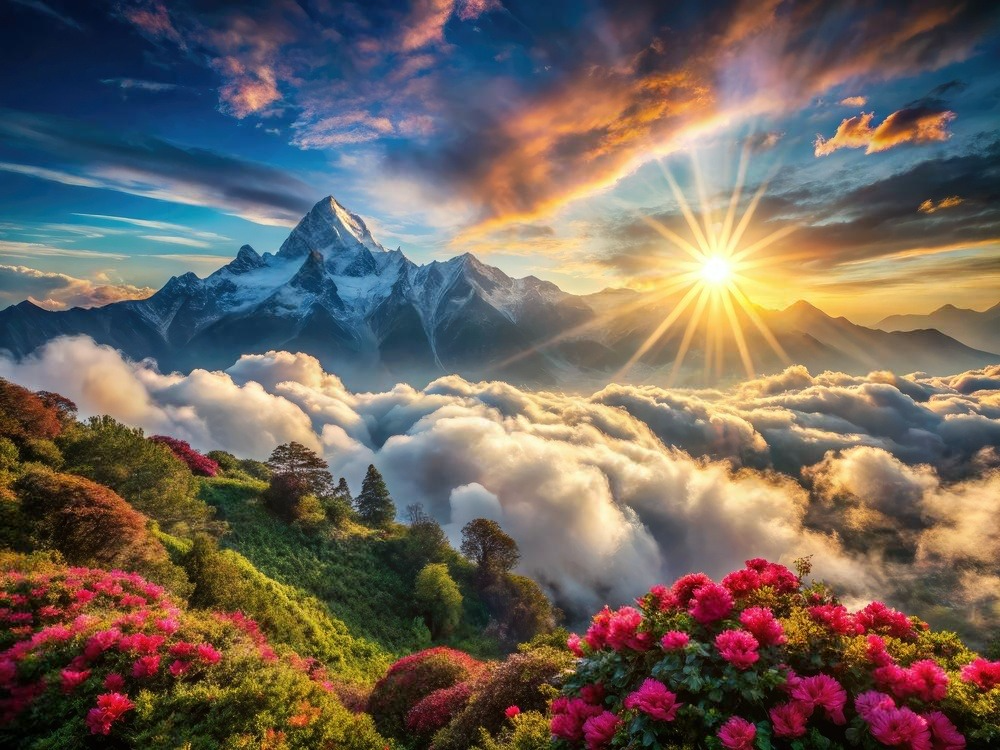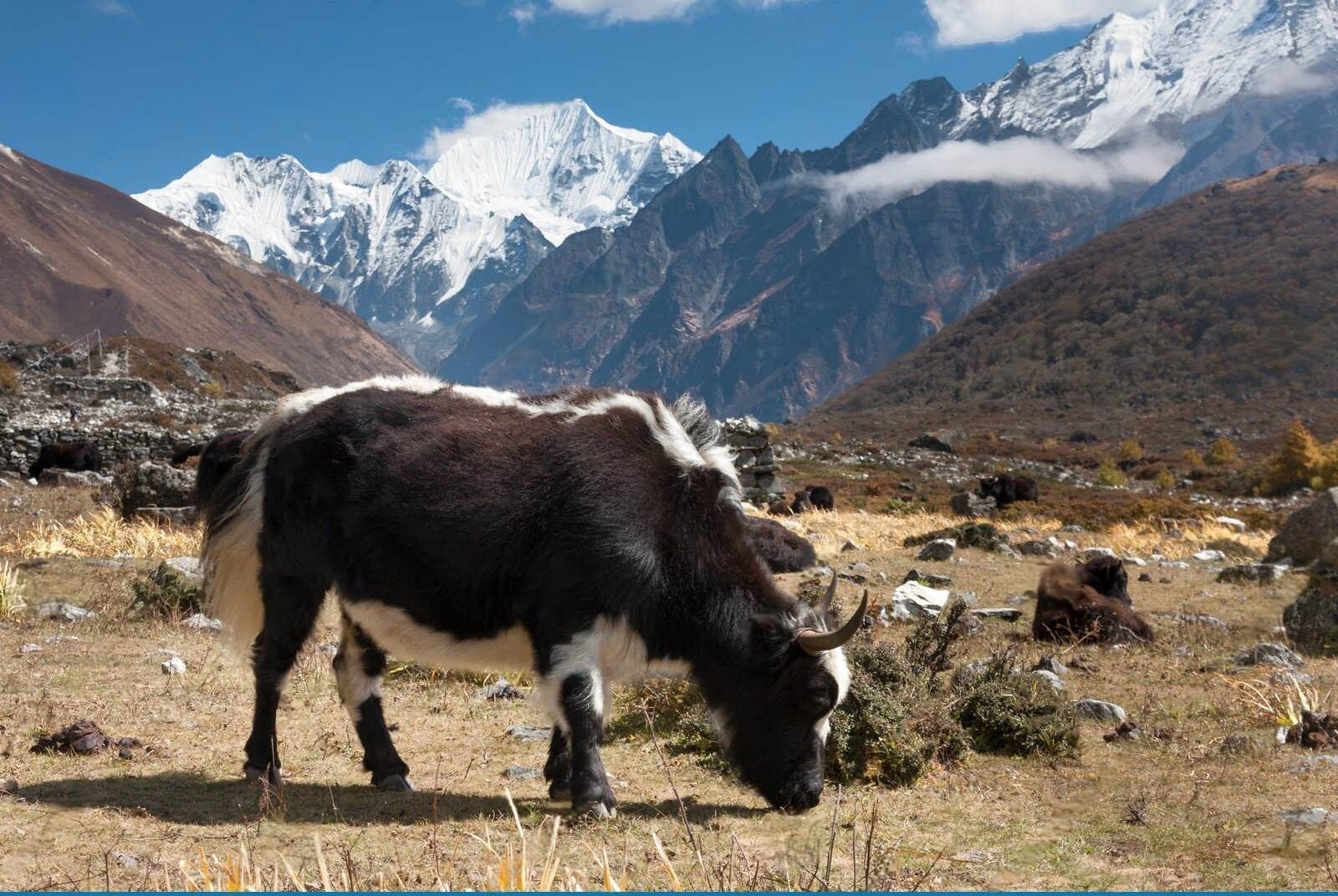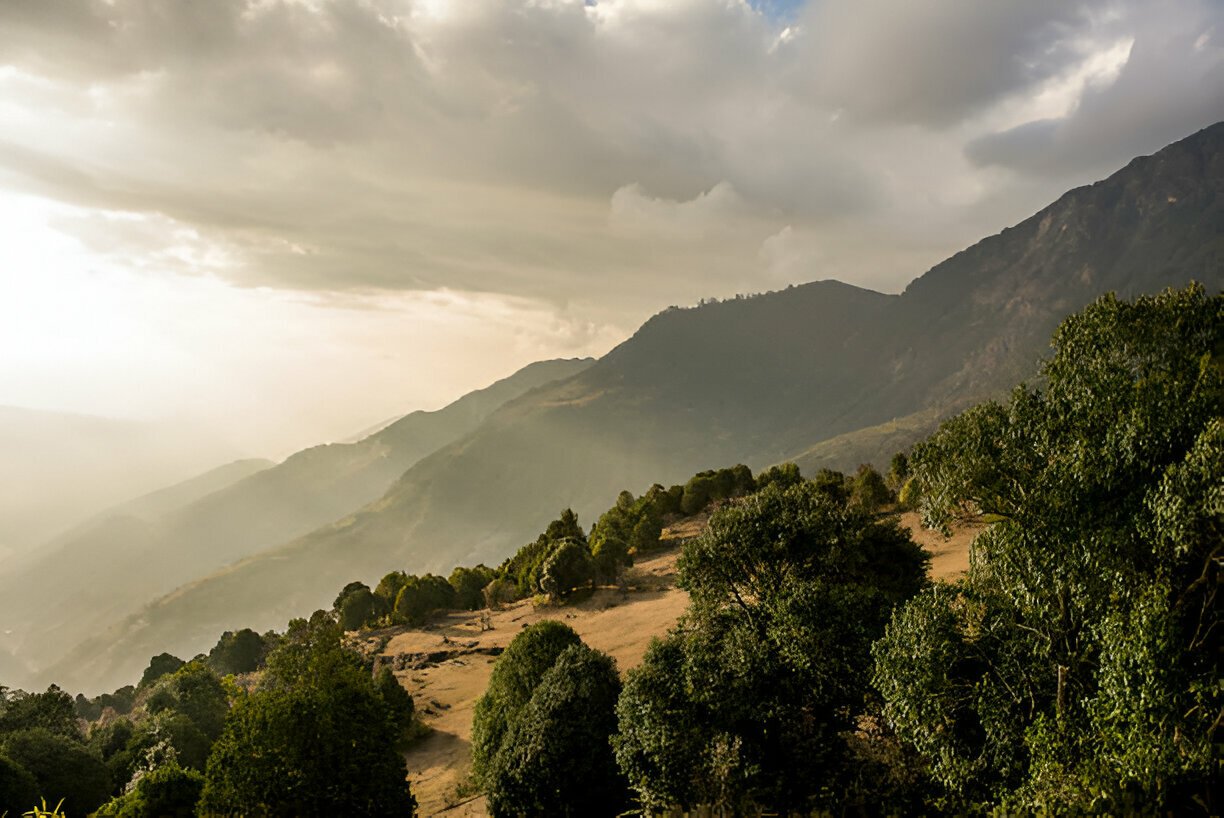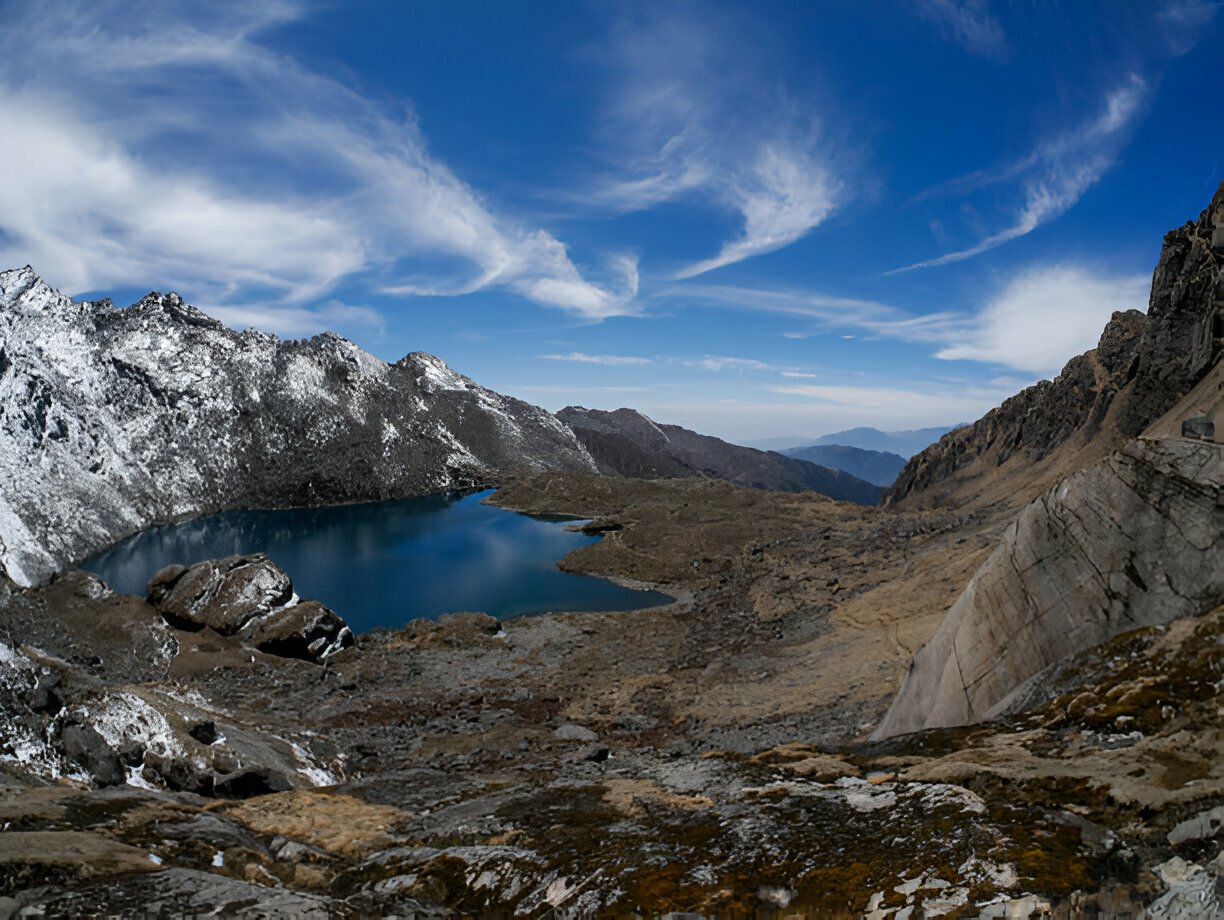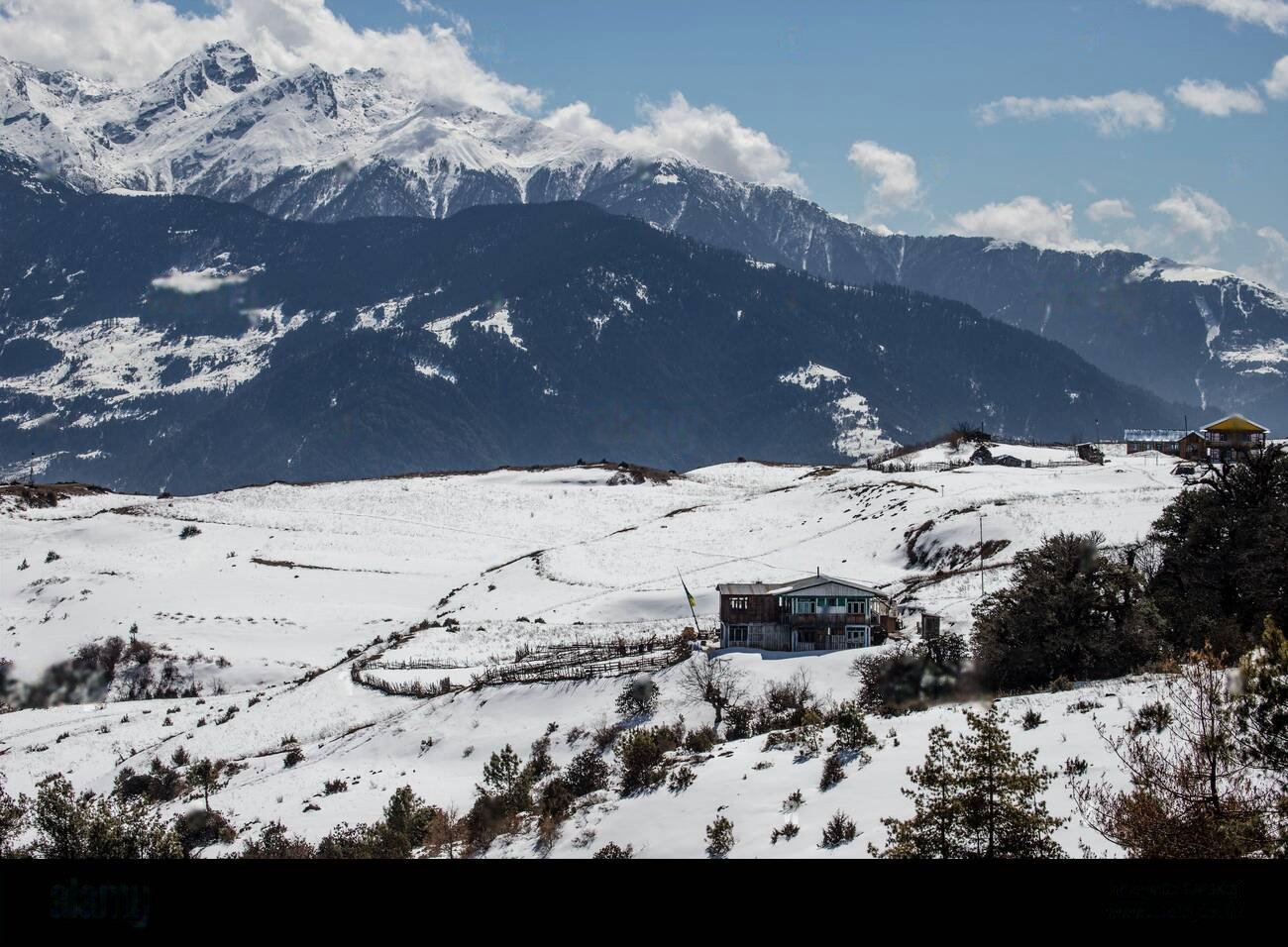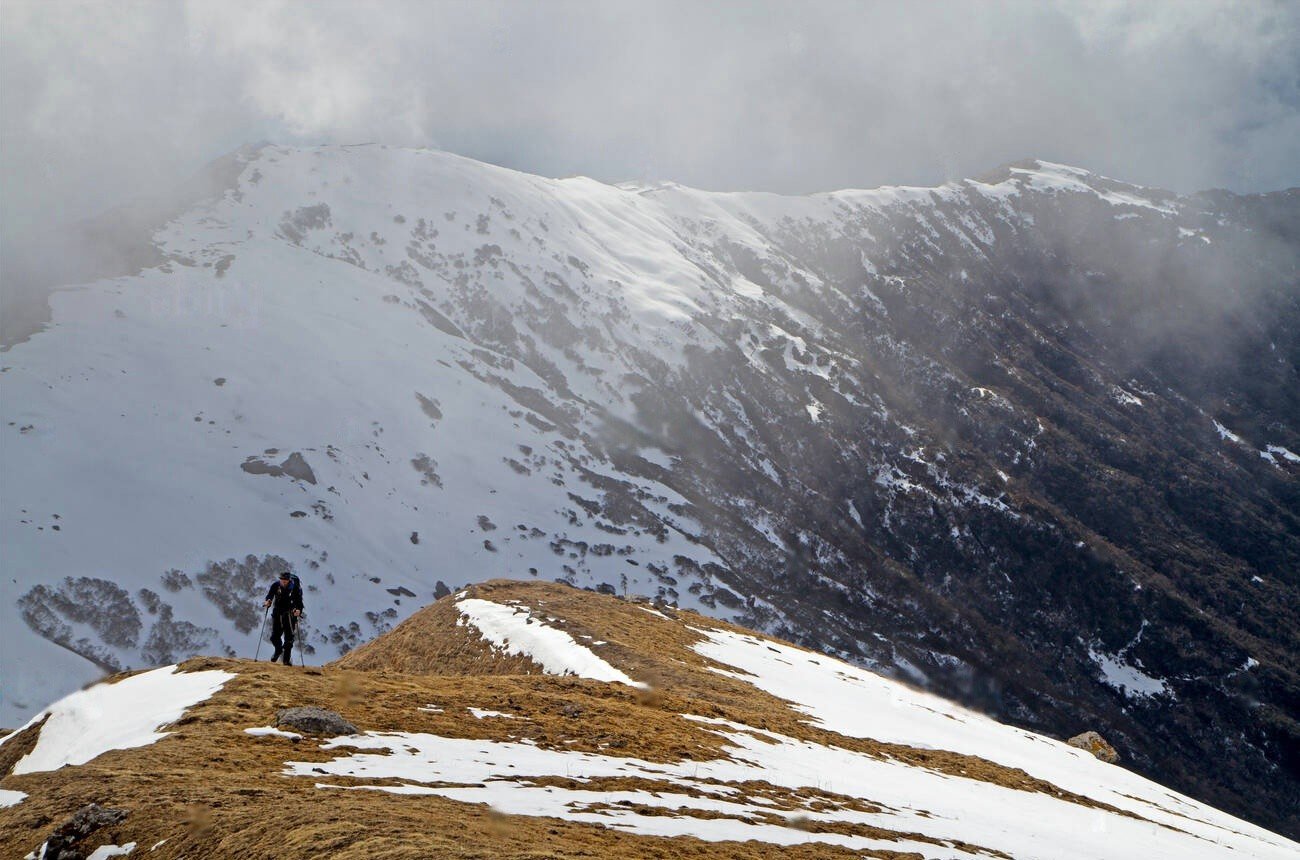 About this Trip
About this Trip
The Khopra Ridge Trek represents a perfect balance of accessibility and wilderness, offering what many experienced guides consider the ideal alternative to Nepal's more commercial trekking routes. What sets this trek apart is its remarkable ability to deliver world-class mountain scenery and authentic cultural experiences while maintaining a sense of discovery that has become increasingly rare on popular Himalayan trails.
The trek follows a thoughtfully designed route that maximizes landscape diversity while avoiding the heavier foot traffic of the classic Annapurna circuits. Beginning in traditional farming communities, the trail ascends gradually through changing ecosystems before reaching the dramatic high ridges that form the journey's centerpiece. This progression creates a natural narrative arc, with each day revealing new perspectives and increasingly spectacular mountain panoramas that culminate in the breathtaking views from Khopra Ridge itself.
The cultural dimension of this trek holds special significance for travelers seeking authentic encounters. Villages along the route maintain traditional agricultural practices, architectural styles, and cultural observances largely unaffected by mass tourism. The community lodge initiative that supports this trek ensures that tourism benefits flow directly to local communities, creating a more equitable relationship between visitors and hosts. This model has helped preserve cultural authenticity while providing economic opportunities that reduce outmigration from these mountain communities.
Physically, the trek presents a satisfying challenge without requiring extreme endurance or technical skills. The trail gains significant altitude through daily climbs that reward effort with increasingly expansive views. The optional day hike to Khayer Lake adds a more demanding high-altitude component for those seeking additional adventure, while the main route remains accessible to reasonably fit trekkers with proper acclimatization. This flexibility in difficulty makes the journey adaptable to different fitness levels and ambitions.
Perhaps most distinctively, the Khopra Ridge trek offers what many consider the perfect balance between comfort and wilderness experience. The community lodges provide basic but comfortable accommodation with proper beds, hearty meals, and welcoming atmospheres, eliminating the need for camping equipment while maintaining an authentic mountain atmosphere far removed from the relative luxury of teahouses on more commercial routes. This balance creates a journey that feels like a genuine adventure without unnecessary hardship.
This combination of spectacular scenery, cultural richness, physical reward, and relative solitude creates what many experienced Nepal trekkers describe as the perfect "Goldilocks" trek—not too easy, not too difficult, and offering the essence of the Himalayan experience without the crowds that now characterize many of the region's most famous routes.
The Khopra Ridge Trek represents a perfect balance of accessibility and wilderness, offering what many experienced guides consider the ideal alternative to Nepal's more commercial trekking routes. What sets this trek apart is its remarkable ability to deliver world-class mountain scenery and authentic cultural experiences while maintaining a sense of discovery that has become increasingly rare on popular Himalayan trails.
The trek follows a thoughtfully designed route that maximizes landscape diversity while avoiding the heavier foot traffic of the classic Annapurna circuits. Beginning in traditional farming communities, the trail ascends gradually through changing ecosystems before reaching the dramatic high ridges that form the journey's centerpiece. This progression creates a natural narrative arc, with each day revealing new perspectives and increasingly spectacular mountain panoramas that culminate in the breathtaking views from Khopra Ridge itself.
The cultural dimension of this trek holds special significance for travelers seeking authentic encounters. Villages along the route maintain traditional agricultural practices, architectural styles, and cultural observances largely unaffected by mass tourism. The community lodge initiative that supports this trek ensures that tourism benefits flow directly to local communities, creating a more equitable relationship between visitors and hosts. This model has helped preserve cultural authenticity while providing economic opportunities that reduce outmigration from these mountain communities.
Physically, the trek presents a satisfying challenge without requiring extreme endurance or technical skills. The trail gains significant altitude through daily climbs that reward effort with increasingly expansive views. The optional day hike to Khayer Lake adds a more demanding high-altitude component for those seeking additional adventure, while the main route remains accessible to reasonably fit trekkers with proper acclimatization. This flexibility in difficulty makes the journey adaptable to different fitness levels and ambitions.
Perhaps most distinctively, the Khopra Ridge trek offers what many consider the perfect balance between comfort and wilderness experience. The community lodges provide basic but comfortable accommodation with proper beds, hearty meals, and welcoming atmospheres, eliminating the need for camping equipment while maintaining an authentic mountain atmosphere far removed from the relative luxury of teahouses on more commercial routes. This balance creates a journey that feels like a genuine adventure without unnecessary hardship.
This combination of spectacular scenery, cultural richness, physical reward, and relative solitude creates what many experienced Nepal trekkers describe as the perfect "Goldilocks" trek—not too easy, not too difficult, and offering the essence of the Himalayan experience without the crowds that now characterize many of the region's most famous routes.
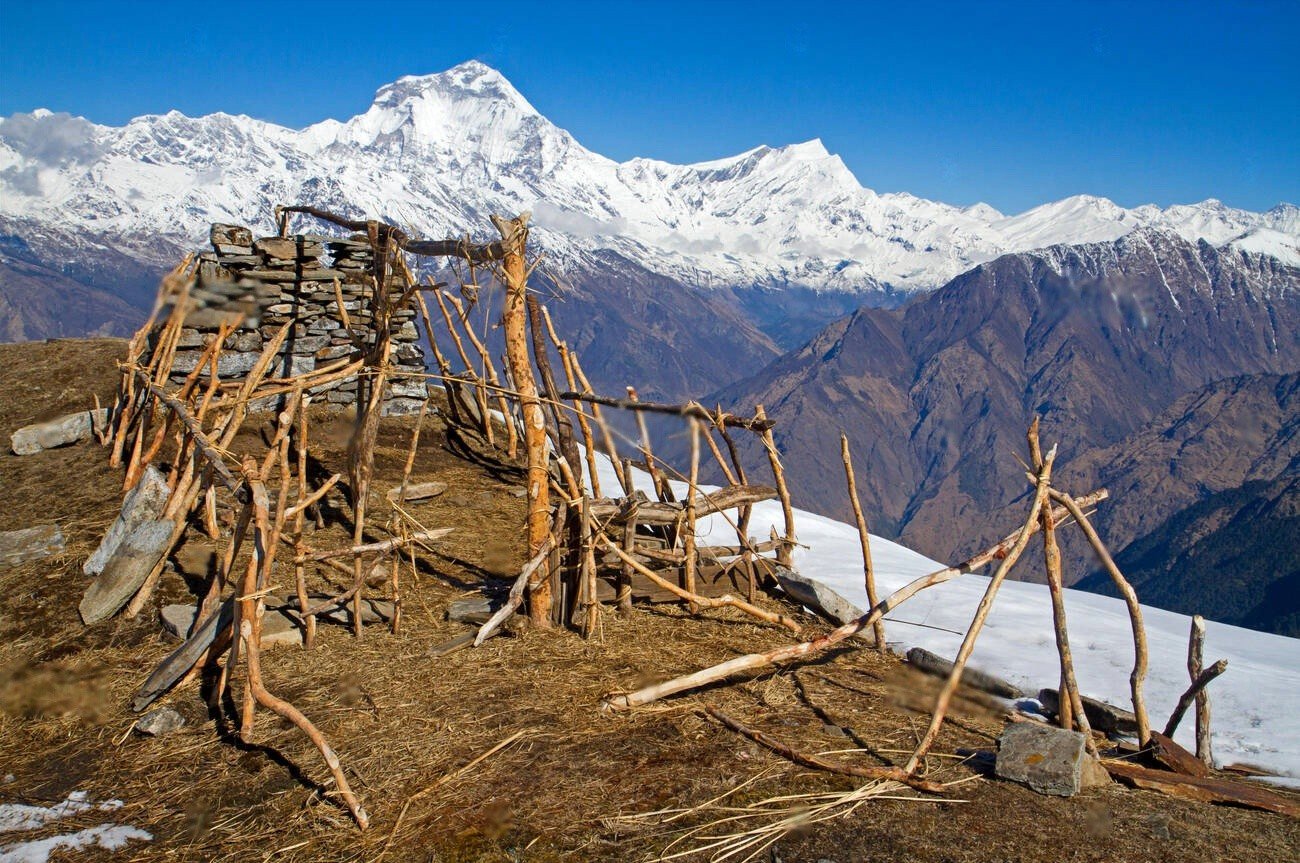
From $0
Price Varies from Group Size
Success
Here goes about why the success toast occurred.
 Itinerary
Itinerary
Arrival in Kathmandu (1,400m)
Your Khopra Ridge adventure begins in Nepal's vibrant capital. After airport pickup, settle into your hotel and attend a comprehensive pre-trek briefing with your guide, who will outline the journey ahead through this less-traveled region of the Annapurna massif. Take time to explore Kathmandu's cultural heritage sites and gather any last-minute supplies. The evening provides an opportunity to enjoy authentic Nepali cuisine and prepare mentally for the trek ahead. Accommodation: Comfortable hotel in Kathmandu with modern amenities.
Kathmandu to Pokhara (820m)
After breakfast, depart for Pokhara by tourist bus, a scenic 6-7 hour journey through the middle hills of Nepal, following river valleys and passing through traditional villages. Alternatively, take a short 25-minute flight for magnificent aerial views of the Himalayan foothills. Upon arrival in Pokhara, enjoy the relaxed atmosphere of this lakeside city with optional boating on Phewa Lake or visits to local temples. Use the opportunity to glimpse the Annapurna range, including the distinctive peak of Machapuchare (Fishtail Mountain), which will be visible throughout much of your trek. Accommodation: Tourist-class hotel in Pokhara.
Pokhara to Ghandruk (1,940m)
After breakfast, take a 1.5-hour drive to Kimche, where your trek begins. Start with a 2-3 hour ascent through terraced fields and scattered villages to Ghandruk, one of the largest and most picturesque Gurung villages in Nepal. The afternoon allows time to explore this beautiful settlement with its traditional stone houses, narrow paved lanes, and spectacular mountain views of Annapurna South and Hiunchuli. Visit the local museum to learn about Gurung culture, observe traditional weaving, and interact with locals, many of whom have served in the famous Gurkha regiments of the British and Indian armies. Accommodation: Community lodge or teahouse in Ghandruk.
Ghandruk to Tadapani (2,630m)
Begin your day with a 4-5 hour trek through magnificent rhododendron and oak forests. The trail climbs steadily, offering occasional views of the mountains through clearings in the forest. During spring (March-April), the rhododendron bloom transforms the forest into a riot of red, pink, and white flowers, creating one of the most beautiful stretches of the entire trek. Reach Tadapani by early afternoon, a small settlement perched on a ridge with excellent views of Annapurna South, Machapuchare, and the surrounding peaks when weather permits. Accommodation: Community lodge or teahouse in Tadapani.
Tadapani to Dobato (3,460m)
Today's 5-6 hour trek takes you away from the more frequented trails and into more remote territory. The path initially continues through rhododendron forest before gradually emerging above the tree line into alpine terrain. As the vegetation changes, so do the views, becoming increasingly expansive. The trail traverses ridgelines with spectacular vistas of the Annapurna range. Reach Dobato by late afternoon, a small settlement offering the first taste of the panoramic mountain views that characterize the higher portions of this trek. Accommodation: Community lodge in Dobato.
Dobato to Khopra Ridge (3,660m)
Rise early for a short pre-breakfast hike to a nearby viewpoint, Muldai, offering 360-degree panoramas of the Annapurna range, Dhaulagiri, and distant Himalayan peaks—a perfect appetizer for the spectacular views to come. After returning for breakfast, trek for 5-6 hours along ridgelines and through high alpine landscapes to reach Khopra Ridge, one of the most dramatically situated overnight stops in the entire Annapurna region. The lodge sits perched on the ridge with uninterrupted views of Dhaulagiri, Annapurna South, and Nilgiri, creating a spectacular setting for sunset and sunrise. The sense of space and openness from this high vantage point creates a profound connection to the Himalayan landscape. Accommodation: Community lodge at Khopra Ridge.
Khopra Ridge - Day hike to Khayer Lake (4,500m) - Khopra Ridge
For those with sufficient energy and acclimatization, today offers a challenging but rewarding 7-8 hour round-trip hike to sacred Khayer Lake. The trail climbs steeply through alpine terrain to reach this high-altitude lake revered by local communities. Hindu and Buddhist pilgrims visit during specific festival periods to perform rituals believed to bring good fortune. Beyond its spiritual significance, the lake offers even more expansive mountain views and a profound sense of high-altitude wilderness. Those preferring a less strenuous day can explore the ridgelines around Khopra, enjoy the magnificent views, and observe the abundant birdlife in this alpine environment. Return to Khopra Ridge for a second night, allowing full appreciation of this extraordinary location. Accommodation: Community lodge at Khopra Ridge.
Khopra Ridge to Swanta Village (2,200m)
Begin your descent with a 5-6 hour trek that follows a different route from your ascent, maintaining the journey's sense of discovery. The trail descends steeply at first before leveling through changing vegetation zones. As you lose altitude, the environment transitions back from alpine to forested landscapes, with increasing bird activity and denser vegetation. Reach Swanta, a traditional settlement with predominantly Magar population, where terraced fields cascade down the hillside and traditional agricultural practices continue unchanged for generations. This authentic village offers insights into rural life beyond the more developed trekking routes. Accommodation: Community lodge or homestay in Swanta.
Swanta Village to Ghorepani (2,840m)
Trek for 4-5 hours through beautiful forests and traditional farming communities to reach Ghorepani, a major junction on the more popular trekking routes. The trail climbs gradually through rhododendron forests and past small settlements before reaching this relatively busy village situated on a ridge with panoramic views. Ghorepani offers more developed facilities than previous stops on your trek, creating a gradual transition back toward more populated areas. The dramatic change in atmosphere from the solitude of Khopra Ridge provides an interesting contrast and perspective on different trekking experiences within the same region. Accommodation: Teahouse in Ghorepani with improved facilities.
Ghorepani to Poon Hill (3,210m) to Hile (1,430m)
Rise early (around 4:30 am) for a 45-minute pre-dawn hike to Poon Hill, one of Nepal's most famous viewpoints, to witness a spectacular sunrise over the Himalayas. From this perfect vantage point, observe the first light illuminating an arc of peaks including Dhaulagiri, Annapurna South, Machapuchare, and other mountains you've viewed from different angles throughout your trek. After savoring this unforgettable panorama and taking photographs, return to Ghorepani for breakfast. The day's trek then involves a significant descent of around 6-7 hours, including the famous 3,300 stone steps that lead down from Ulleri village. The dramatic descent brings you through changing ecosystems back to the subtropical zone, completing the ecological journey you began days earlier. Accommodation: Basic teahouse in Hile.
Hile to Nayapul to Pokhara
Complete your trek with a gentle 2-3 hour descent to Nayapul, where vehicles await to return you to Pokhara (approximately 1.5 hours away). The trail passes through Birethanti, a pleasant village along the Modi Khola river, before reaching the road head. Back in Pokhara, enjoy the comfort of hot showers, varied cuisine, and the opportunity to reflect on your journey through one of Nepal's most spectacular but less-visited trekking regions. Accommodation: Tourist-class hotel in Pokhara.
Pokhara
Take a well-deserved rest day in Pokhara. Options include boating on Phewa Lake, visiting the World Peace Pagoda for panoramic views, exploring the International Mountain Museum, paragliding for aerial views of the landscape you've just trekked through, or simply relaxing in lakeside cafes and restaurants. This day allows time to absorb the experiences of your journey. Accommodation: Same hotel in Pokhara.
Pokhara to Kathmandu
Return to Kathmandu by tourist bus (6-7 hours) or a short flight (25 minutes). The afternoon in Kathmandu offers opportunities for souvenir shopping in Thamel or additional sightseeing. A farewell dinner provides a chance to celebrate your Khopra Ridge adventure with guides and fellow trekkers. Accommodation: Comfortable hotel in Kathmandu.
Departure from Kathmandu
Your Khopra Ridge adventure concludes with a transfer to Kathmandu International Airport for your departure flight. Depending on your schedule, you might have time for last-minute shopping or sightseeing in Kathmandu before leaving Nepal with memories of your journey through this spectacular region of the Annapurna massif.
 Services
Services
Includes
- Specialized bilingual guide familiar with the Khopra Ridge region
- Private Transport where applicable
- Tourist bus/flight between Kathmandu and Pokhara
- Daily meals on the trek: breakfast, lunch, and dinner
- Services of an experienced guide and porter during the trek
- All essential trekking permits, including ACAP (Annapurna Conservation Area Permit) and TIMS
- Accommodation throughout the trek (community lodges and teahouses)
Excludes
- Additional accommodation due to weather delays or personal preference
- Comprehensive travel and medical insurance for the trek
- Gratuities for the guides, porters, and trekking support staff
- International flights and entry visa fees for Nepal
- Personal trekking equipment and gear (sleeping bags, jackets, etc.)
- Extra food and drinks beyond the standard meals provided
- Hot showers and battery charging at lodges (pay per use)
- Activities in Pokhara (boating, paragliding, etc.)
 Good to Know
Good to Know
Prepare physically with cardio and leg-strengthening exercises before your trek, as some days involve significant ascent. While community lodges are clean and comfortable, they are more basic than teahouses on popular routes; bringing a good quality sleeping bag is essential for comfort on colder nights. Pack layers for temperatures ranging from mild in lower regions to potentially below freezing at Khopra Ridge and during the Khayer Lake excursion. Water purification tablets or filters are essential as bottled water is not available at higher elevations. The trek requires proper acclimatization—never rush the ascent if experiencing altitude symptoms, especially when planning the optional Khayer Lake excursion. The relative remoteness means medical facilities are limited; bring a comprehensive first aid kit and consider evacuation insurance. Cell phone coverage is intermittent throughout the trek, with better connectivity at Ghandruk and Ghorepani than at Khopra Ridge. Pack responsibly and minimize waste as trail maintenance depends on local community efforts.
Wildlife Encounters
While trekking, keep an eye out for:
Himalayan tahr and goral (mountain goats), Barking deer in forested sections, Himalayan langur monkeys, Various pheasant species including the colorful Danphe (Nepal's national bird), Lammergeier (bearded vulture) and Himalayan griffon soaring above ridges, Eagles and kestrels hunting in alpine meadows, Over 400 bird species in the general region, Numerous butterfly species, particularly in lower forested sections in spring, Pikas (small rabbit-like mammals) in rocky higher sections, Occasional glimpses of leopard tracks (though actual sightings are extremely rare)
 Reviews
Reviews
 FAQs (Frequently Asked Questions)
FAQs (Frequently Asked Questions)
Your queries are answered.
What are community lodges?
Collectively owned by local villages, with profits supporting community development projects. Simpler than commercial teahouses but clean and authentic.
When is the best time to trek?
October-November (clearest views) or March-May (rhododendron blooms).
How demanding is the trek?
Moderate to challenging with 4-7 hour daily hikes. Good fitness is needed, especially for Khayer Lake excursions.
Is Guide necessary?
Highly recommended as trails are less clearly marked than popular routes.
Do we require permits?
ACAP permit ($30) and TIMS card ($10).
What is the Accommodation quality?
Basic but clean community lodges in remote areas; standard teahouses in Ghandruk and Ghorepani. Bring your own sleeping bag.
How difficult is the Khayer Lake side trip?
Challenging 7-8 hour round-trip with 800-900 m elevation gain at high altitude. Not recommended for anyone with altitude symptoms.
How about WiFi/phone connectivity?
Available in Ghandruk and Ghorepani, limited to non-existent at Khopra Ridge.
Is Extra budget needed?
About $10-15 per day for hot showers, charging, and extra snacks/drinks.




